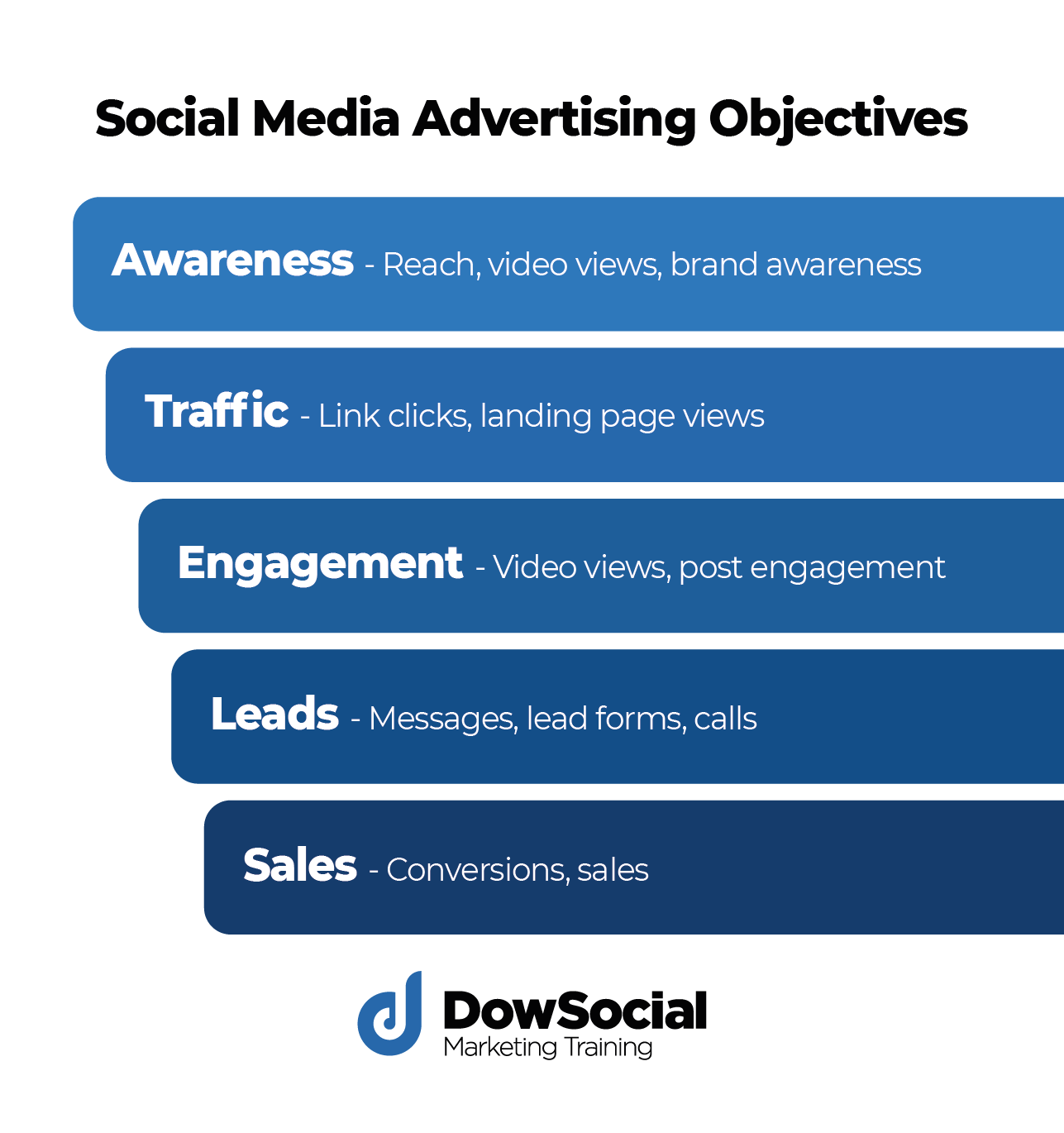The power of social media advertising to reach, influence, and inspire action from potential customers make them a crucial part of an effective social media strategy.
Particularly true if you are starting from scratch or have a limited social media following.
The algorithms that control what content is shown to users prioritise paid content over organic content.
Meaning that, even if you have a sizeable existing following, the battle to find your audience organically in the face of continuous downward reach trends makes relying on organic traffic dangerous and inconsistent.
By using paid ads, you can ensure that your content is being seen by the people you want to reach, even if your organic reach has declined.
We still recommend creating and sharing high-quality organic content, but with organic reach declining, paid ads can effectively help you reach your marketing goals.
Defining your paid social advertising strategy should be aligned with your overall marketing goals and social media objectives.
Target Audience & Objectives
For your paid social media advertising strategy, you must define your target audience
- Where are they in your sales funnel
- Which platforms are they active on
- What are your social media objectives
Then set your objective within the advertising software for the social media platforms you will use to advertise.
Each platform has its version of these objectives, but they all roughly use the following term and outcomes.

Setting your budget
Your budget will depend on your goals; ultimately, the best way is to start with a small budget and test different objectives, platforms and adverts to see what works best for your business.
Ultimately you want to set a target cost per action (CPA) that is calculated by factoring in the conversion rate through the sales funnel and the estimated lifetime value (ELV) of a customer.
For example, if you sell a low-value product that people only buy once, then the tolerable CPA will be lower than a higher-value product sold to people who may buy from you multiple times.
Here are some rough starting points based on budget per platform
META
£20 per day per 100,000 audience
£100 per 50,000 audience
TikTok
£100 per day
Resources
The final element of your social media advertising plan is ensuring you have someone with the appropriate knowledge to set up, manage and report on your campaigns.
- Development of ad landing pages
- Design for ad creatives
- Ad specialists to create campaigns
- Data analysts to summarise results
You can perform these tasks in-house using the platform guides and support structures such as LinkedIn Ads support or META Blueprint.
Alternatively, you can bring in an expert to support you with some or all of the creation and management process.
Measuring Success
The success of your campaigns can be defined by mapping the campaign metrics to your social media objectives.
Depending on your paid ad objectives you may choose to measure, track and refine in line with.
Reach: The number of people who have seen your post. Most applicable for brand awareness campaigns.
Impressions: The number of times your ad has been displayed, divide this by reach to get the avg number of times someone has seen your ad (frequency). This fits with brand awareness campaigns.
Engagement: This includes likes, comments, and shares on your social media posts, as well as clicks on your ads.
Cost per action (CPA): This is the amount you pay for a specific action, such as a click or engagement. This is perfect across all elements of the sales funnel.
Return on investment (ROI): This used to be a popular measure of the profitability of your social media advertising. However, marketing is increasingly muli-touch and with the reduced effectiveness of tracking can be harder to accurately calculate in relation to your social media.
Pick one or two key performance indicators (KPIs) to show whether your advertising is making an impact.
![Create Your Paid Social Media Strategy [DOWNLOAD]](https://www.dowsocial.com/wp-content/uploads/2023/01/Paid-Social-Media-Strategies-1.png)